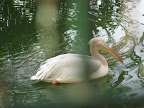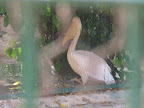The year was 1290 . A crowd had gathered around a clearing, where broken down pillars marked the presence of an ancient temple, now long gone. A young boy, just 14 years old, leaned against one of those pillars, deep in thought. Then, he began speaking, and the crowd fell silent, listening to his every word. He spoke without any notes, translating the Bhagavat Gita, from Sanskrit, which only the pundits knew, to the language everyone in the village knew and spoke – a variety of Prakrit which developed into the Marathi language. Even as he spoke, one of the men in the audience realized how momentous this event was, and how important this composition would be. He began writing down the words the young boy spoke, and this composition was named by its author and composer, the Bhavartha Deepika – the enlightening meaning (of the Bhagavat Gita). Now, the ancient, holy text, was no longer restricted to the pundits, but accessible to all, understood easily by them, composed as it was, in their...
Varanasi may be home to the most popular and ancient Hindu temples, but it also has the distinction of being one of the most sacred destinations for Buddhists too. Sarnath, about 20 Kms from Varanasi, is where the Buddha taught his first few disciples. This sacred place, which Emperor Ashoka tried to immortalize by building the greatest Stupa, fell to ruins like many Hindu temples in the vicinity. However, archaeological excavations have unearthed what is left of them, and efforts are on to not only preserve the remnants, but also to find out more details about them. Credit must certainly be given to the Buddhist Society, because of whom this site has been preserved as much as possible.
Sarnath is easily approachable from Varanasi. An auto wala charges about Rs.150/- for the trip (to and fro). A number of people hanging around act as guides, though a guide is not really necessary. All the structures have detailed descriptions and explanations on boards. All you need is the patience to read them! The guides are useful, though, if you want to see the temples constructed around recently.

The Stupa
Buddha was born at Lumbini, now in Nepal, and attained enlightenment under the Bodhi tree at Bodh Gaya. It was here he came next, to impart his teachings to his first 5 followers. It is believed that Emperor Ashoka constructed the Stupa at the exact place where the Buddha sat. The Dhamek Stupa is the only structure left standing in the entire area. It is 28m in diameter at the base and 43.6m in height, built partly of stone and partly of brick. There are intricate carvings on the lower portion of the Stupa.

The Stupa amid the ruins of the ancient structures
The Stupa and the ruins of the ancient temples are protected monuments and one has to pay a minimal amount to view them. They are maintained by the archaeological society in association with the Buddhist society. The grounds of this enclosure are huge, and each ruin has detailed descriptions of the nature of the original structure and its history. It is a good pace to take children. Though they understand nothing much of history, unlike most places around Varanasi, here they have ample place to run around and enjoy themselves. Samhith had a good time here, and he was actually curious about what the broken down structures were. It is probably a better idea to bring children to such places to teach them history, rather than spending time poring over boring books!
It is here that the original of the Ashoka pillar was found with the distinctive emblem of the four lions, which is now preserved in the museum. The museum, I have heard is very good, and worth a visit. However, the down side is that is open only from 10AM to 4:30PM, and we were unable to visit it.

The Mulagandha Kuti Vihara

Anagarika Dharmapala from Sri Lanka who built the Mulagandha Kuti Vihara
The most recent structure here is the Mulagandha Kuti Vihara. The original Mulagandha Kuti temple lies among the brick ruins. This recent temple was built by the Sri Lankan Buddhist Monk, Anagarika Dharmapala, who founded the Maha Bodhi society. The story goes that he came on a pilgrimage to India, to visit the most sacred places in the life of Buddha, and he was appalled by the condition of the shrines at Sarnath. He had this temple constructed as a place of worship for Buddhists who came here from all over the world. He also collected some of the bones of the Buddha and had them kept in a casket in the temple. Over this casket is placed a beautiful image of the Buddha, made in stone, but covered with gold.

The Buddha Statue inside the temple placed on the casket containing the bones of the Buddha
On the walls are paintings depicting incidents from Buddha’s life, painted by the renowned Japanese painter, Kosetsu Nosu. He also brought a cutting from the Bodhi tree at Sri Lanka (which in turn was grown from a cutting of the original tree at Gaya), which he planted in an enclosure near the temple. Around this tree are kept statues of the first five disciples of the Buddha as well as statues of the earlier Bodhisattvas. There is also a complete script of the first discourse of Buddha, in various languages.



The Paintings inside the temple
One thing which I appreciated about this place was the serenity that was maintained in spite of the crowd visiting it. This probably has something to do with the atmosphere of the place itself, and which is probably why the Buddha chose this particular place for his first sermon. One thing to appreciate about the society is that one is allowed to click photos inside the temple. There is no ticket for cameras, but there is a placard telling us to put Rs.10/- per camera in the donation box. There is no one to actually make sure that one does put the money in. it is left to one’s conscience to do the right thing, and probably what the Buddha would have expected us to do. It is a good system that seems to work here, and will probably work in other places too.
Once upon a time, when the Buddha came here, this was a forest with a number of deer, whom the Buddha was specially attracted to. In his forms as the Bodhisattva, He had frequently taken the form of a deer. The name ‘Sarnath’ is believed to come from the word ‘Saranga-nath’, or the Lord of the Deer, as the Buddha was known here. In recent times, till about 20 years back, there was a deer park here. This park has now given way to a small zoo with birds like parrots, parakeets and peacocks, and water birds like the pelicans and storks, and also a few crocodiles. There are quite a few deer around too. This mini zoo was something Samhith enjoyed thoroughly. We did not see any crocs, though we did see the deer and the water birds.






Animals and Birds in the Mini Zoo
The constant influx of Buddhists from all over the world has led to the construction of new Buddhist temples. Among these is the impressive sandalwood temple built by the Japanese. This temple is built using sandalwood (so our guide told us). Inside is a life size statue of the Buddha in the pose in which he breathed his last. There are also statues of his first disciples, each made of a single block of sandalwood. The carvings and the decoration of the temple are beautiful, and make a visit to this temple worthwhile. When we visited, a form of aarti or prayer was in session with people singing and beating cymbals. Though I couldn’t understand a word, the music was soothing, and I could have stood there for ages listening to it, if it wasn’t for my boisterous son, who was running around, distracting people.

The Japanese Sandalwood Temple

Inside the Temple
I had thought that was the end of my Sarnath trip, but it wasn’t to be. As I have mentioned earlier, the name ‘Sarnath’ is believed to come from ‘Saranga-nath’ or Lord of the Deer, referring to the Buddha. However, our guide had a different take on it. He took us to a small temple near the Japanese one, where there were two lingams in the sanctum. Here, he said the two lingams represented Shiva and his brother-in-law (Sati’s brother and Daksha’s son) whose name was ‘Sarangnath’. Hence, he said, the name ‘Sarnath’ for this place. Whether it was simply wishful thinking of Hindus to have the name after one of their Gods, or whether it was really true, I have absolutely no idea, and honestly, I can’t think that it matters very much. After all, it is not the name which matters, or the god or the guru we believe in. it is our action that judge us, and not our beliefs. No religion teaches us to fight or kill. They all try to teach us tolerance, and that is what we ought to learn.
Sarnath is easily approachable from Varanasi. An auto wala charges about Rs.150/- for the trip (to and fro). A number of people hanging around act as guides, though a guide is not really necessary. All the structures have detailed descriptions and explanations on boards. All you need is the patience to read them! The guides are useful, though, if you want to see the temples constructed around recently.

The Stupa
Buddha was born at Lumbini, now in Nepal, and attained enlightenment under the Bodhi tree at Bodh Gaya. It was here he came next, to impart his teachings to his first 5 followers. It is believed that Emperor Ashoka constructed the Stupa at the exact place where the Buddha sat. The Dhamek Stupa is the only structure left standing in the entire area. It is 28m in diameter at the base and 43.6m in height, built partly of stone and partly of brick. There are intricate carvings on the lower portion of the Stupa.

The Stupa amid the ruins of the ancient structures
The Stupa and the ruins of the ancient temples are protected monuments and one has to pay a minimal amount to view them. They are maintained by the archaeological society in association with the Buddhist society. The grounds of this enclosure are huge, and each ruin has detailed descriptions of the nature of the original structure and its history. It is a good pace to take children. Though they understand nothing much of history, unlike most places around Varanasi, here they have ample place to run around and enjoy themselves. Samhith had a good time here, and he was actually curious about what the broken down structures were. It is probably a better idea to bring children to such places to teach them history, rather than spending time poring over boring books!
It is here that the original of the Ashoka pillar was found with the distinctive emblem of the four lions, which is now preserved in the museum. The museum, I have heard is very good, and worth a visit. However, the down side is that is open only from 10AM to 4:30PM, and we were unable to visit it.

The Mulagandha Kuti Vihara

Anagarika Dharmapala from Sri Lanka who built the Mulagandha Kuti Vihara
The most recent structure here is the Mulagandha Kuti Vihara. The original Mulagandha Kuti temple lies among the brick ruins. This recent temple was built by the Sri Lankan Buddhist Monk, Anagarika Dharmapala, who founded the Maha Bodhi society. The story goes that he came on a pilgrimage to India, to visit the most sacred places in the life of Buddha, and he was appalled by the condition of the shrines at Sarnath. He had this temple constructed as a place of worship for Buddhists who came here from all over the world. He also collected some of the bones of the Buddha and had them kept in a casket in the temple. Over this casket is placed a beautiful image of the Buddha, made in stone, but covered with gold.

The Buddha Statue inside the temple placed on the casket containing the bones of the Buddha
On the walls are paintings depicting incidents from Buddha’s life, painted by the renowned Japanese painter, Kosetsu Nosu. He also brought a cutting from the Bodhi tree at Sri Lanka (which in turn was grown from a cutting of the original tree at Gaya), which he planted in an enclosure near the temple. Around this tree are kept statues of the first five disciples of the Buddha as well as statues of the earlier Bodhisattvas. There is also a complete script of the first discourse of Buddha, in various languages.



The Paintings inside the temple
One thing which I appreciated about this place was the serenity that was maintained in spite of the crowd visiting it. This probably has something to do with the atmosphere of the place itself, and which is probably why the Buddha chose this particular place for his first sermon. One thing to appreciate about the society is that one is allowed to click photos inside the temple. There is no ticket for cameras, but there is a placard telling us to put Rs.10/- per camera in the donation box. There is no one to actually make sure that one does put the money in. it is left to one’s conscience to do the right thing, and probably what the Buddha would have expected us to do. It is a good system that seems to work here, and will probably work in other places too.
Once upon a time, when the Buddha came here, this was a forest with a number of deer, whom the Buddha was specially attracted to. In his forms as the Bodhisattva, He had frequently taken the form of a deer. The name ‘Sarnath’ is believed to come from the word ‘Saranga-nath’, or the Lord of the Deer, as the Buddha was known here. In recent times, till about 20 years back, there was a deer park here. This park has now given way to a small zoo with birds like parrots, parakeets and peacocks, and water birds like the pelicans and storks, and also a few crocodiles. There are quite a few deer around too. This mini zoo was something Samhith enjoyed thoroughly. We did not see any crocs, though we did see the deer and the water birds.






Animals and Birds in the Mini Zoo
The constant influx of Buddhists from all over the world has led to the construction of new Buddhist temples. Among these is the impressive sandalwood temple built by the Japanese. This temple is built using sandalwood (so our guide told us). Inside is a life size statue of the Buddha in the pose in which he breathed his last. There are also statues of his first disciples, each made of a single block of sandalwood. The carvings and the decoration of the temple are beautiful, and make a visit to this temple worthwhile. When we visited, a form of aarti or prayer was in session with people singing and beating cymbals. Though I couldn’t understand a word, the music was soothing, and I could have stood there for ages listening to it, if it wasn’t for my boisterous son, who was running around, distracting people.

The Japanese Sandalwood Temple

Inside the Temple
I had thought that was the end of my Sarnath trip, but it wasn’t to be. As I have mentioned earlier, the name ‘Sarnath’ is believed to come from ‘Saranga-nath’ or Lord of the Deer, referring to the Buddha. However, our guide had a different take on it. He took us to a small temple near the Japanese one, where there were two lingams in the sanctum. Here, he said the two lingams represented Shiva and his brother-in-law (Sati’s brother and Daksha’s son) whose name was ‘Sarangnath’. Hence, he said, the name ‘Sarnath’ for this place. Whether it was simply wishful thinking of Hindus to have the name after one of their Gods, or whether it was really true, I have absolutely no idea, and honestly, I can’t think that it matters very much. After all, it is not the name which matters, or the god or the guru we believe in. it is our action that judge us, and not our beliefs. No religion teaches us to fight or kill. They all try to teach us tolerance, and that is what we ought to learn.
We were also taken to a sari shop where the weavers were Buddhists, and the proceeds were used to provide facilities for the poor. We had already bought enough saris at Varanasi, and my husband accompanied us unwillingly into the shop, but our attention was captured at once by a simple cotton sari with a motif including the word ‘Sarnath’ in the pattern. It was certainly unique, and we were told that saris with this pattern were only available in Buddhist shops at Sarnath. Anyway, even my husband loved them, and we ended up buying a couple more. After spending more than our budget allowed us, we traced back our steps to Varanasi, tired after spending more than 3 hours at Sarnath, filled to the brim with memories we shall treasure.

The Sari with the Sarnath Pattern
Anu,
ReplyDeleteI am very impressed with how thorough you are with these descriptions.
It does look like a very serene place.
Thanks so much, Vamsee.. glad you liked this one... Sarnath was indeed one of the most peaceful places I have been to...
ReplyDeleteWow what a great blog, i really enjoyed reading this, good luck in your work. Historical Places in Sarnath
ReplyDelete